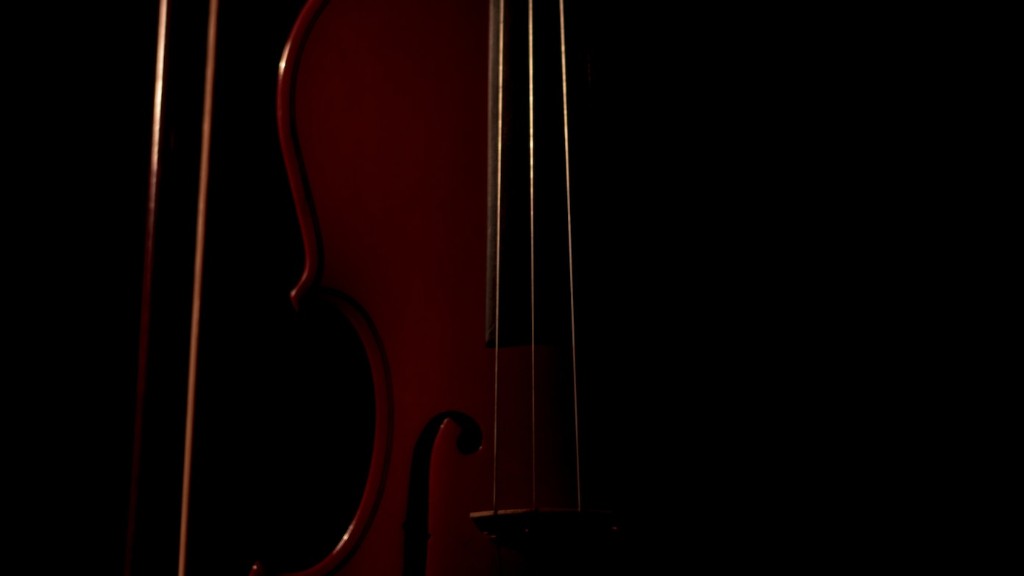Playing the violin is a wonderful way to express yourself and make beautiful music. It is also one of the most challenging instruments to learn. The amount of time it takes to learn the violin depends on many factors, including the student’s dedication, available practice time, and instructor’s guidance.
The average student should expect to spend at least one year learning basic fundamentals such as posture, bowing technique, and intonation. During this time period, students will also be learning how to read music and playing basic melodies. After this initial year of study, students will have developed a strong foundation for further progress.
With consistent practice and instruction, a student should be able to achieve a reasonable level of proficiency within two to three years. It is important to note that proficiency level varies depending on what style of playing the student intends to pursue. For example, those who intend to play classical music may take longer than those who are just looking for basic folk tunes.
The best way for a violinist to learn is by having regular lessons with an experienced teacher who can guide them through their journey. With hard work and dedication it is possible for anyone with the desire and motivation to become a proficient violin player.
The Basics of Learning Violin
Learning violin is a challenging process but one that can be highly rewarding. It is important to understand the basics of learning to play violin before you start. First, you need to get comfortable with the instrument, learn proper posture, and establish a good foundation in the basics of bowing and fingering. You should also familiarize yourself with basic music theory such as scales, chords, and intervals. Practice makes perfect, so it’s important to set aside time each day to practice playing scales, exercises, and pieces.
The amount of time it takes to learn violin depends on your level of commitment and dedication. With practice and patience you can begin playing simple pieces within a few months. However, it typically takes several years to become proficient at playing classical music or other styles of music such as jazz or folk. If you are looking for faster progress then consider taking lessons from a qualified teacher who can give you guidance on proper technique and help you stay motivated over time.
Choosing the Right Teacher
Learning the violin can be a rewarding and enjoyable experience, but it takes dedication and practice to become proficient. Choosing the right teacher is essential for success. The right teacher should be experienced in teaching the instrument, knowledgeable of music theory, and able to provide guidance on technique. They should also be patient, encouraging, and have a good rapport with their students.
The amount of time it will take to learn the violin depends on many factors such as the student’s natural ability, practice time, and dedication. It usually takes at least several months of consistent practice to develop basic skills such as playing simple melodies and scales. With dedicated practice and proper instruction, a beginner could become proficient within one to two years. It may take longer for advanced levels of playing or if one is learning by themselves without instructions from a professional teacher.
When choosing a teacher, it’s important to ask questions about their experience teaching the violin as well as their teaching style. It’s important for the student to feel comfortable with their instructor so that they can get the most out of their lessons. Finding an experienced teacher who is patient, encouraging, and communicates effectively will help ensure that students make rapid progress towards their goals while enjoying learning the violin.
Readying Yourself for Learning Violin
Learning the violin is a rewarding experience, and while it may take some dedication and practice to master, the journey can be incredibly fulfilling. Depending on how much time you are able to devote to practice and study, learning the violin can take anywhere from a few months to several years. Getting started is often the most challenging part.
To ensure success on your journey, begin by selecting a quality instrument. A good violin will sound better and be more comfortable to play than a lower quality instrument. It’s also important to find an experienced teacher who can provide guidance in developing proper playing techniques. Additionally, finding the right music for your skill level and interests can help keep you motivated as you progress.
Finally, having an organized practice schedule is essential for mastering the violin. Breaking down your practice into smaller increments throughout the week will make it easier to stay on track with your learning goals. With dedication and consistency, you’ll be making beautiful music in no time!
Estimating the Time Required for Learning Violin
Learning how to play the violin is a rewarding and enjoyable experience. However, it can take a considerable amount of time and effort to master the nuances of playing this instrument. Generally, a beginner violinist can expect to spend at least six months learning and practicing the basics before they can start to play simple tunes. After six months, a student should be able to read music and understand basic musical concepts such as rhythm and scales.
As the violinist gains more experience, their skill level will increase rapidly. With regular practice, students should be able to play more complex pieces within two years of starting lessons. If a student is serious about mastering the instrument, they should plan on at least 4-5 years of dedicated practice before they can consider themselves proficient on the violin.
For those who are looking for a more intensive approach, some schools offer accelerated courses that allow students to master the basics within one year. These courses require a higher dedication level and often involve additional fees or tuition payments but may be beneficial for those who are serious about their studies. Regardless of which route you choose, learning how to play the violin is an amazing journey that will bring endless joy and satisfaction!
Ways of Improving Your Efficiency in Learning Violin
Learning the violin can be a challenging and rewarding pursuit. To get the most out of your practice time, it is important to look for ways to maximize your efficiency. This can help you make the most of your practice sessions and shorten your learning curve. Here are some tips to help you become more efficient when learning the violin:
1. Start with a Plan: Before starting to practice, create a plan that outlines what you want to accomplish each session. This can help you focus on specific goals, so that you don’t waste time on activities that don’t contribute to achieving them.
2. Use Technology: Make use of music-learning apps and other technologies like metronomes and tuners to track progress and stay on task. These can help keep you motivated and make learning easier.
3. Break up Tasks: Smaller tasks are often easier to complete than large ones, so break up big projects into manageable chunks and take them one at a time. This will help prevent frustration and burnout.
4. Make Time for Reflection: Take some time each day or week to reflect on what you have learned and how far you have come since beginning your violin journey. This will help boost self-confidence and provide motivation for future practice sessions.
5. Find an Appropriate Teacher: Finding an experienced teacher who is knowledgeable about the style of music you wish to learn can dramatically reduce the amount of time it takes for you to learn the basics of playing the violin.
By following these steps, you can improve your efficiency in learning violin, helping make sure that your practice sessions are productive and enjoyable!
Benefits of Practicing Regularly
Practicing the violin regularly has many benefits for aspiring musicians. It can help build skill and technical proficiency, increase confidence, and help create a sense of accomplishment. Regular practice also increases accuracy and speed, as well as developing muscle memory so that musical pieces can be memorized more easily. Furthermore, regular practice helps to develop a better understanding of musical theory and composition techniques. Overall, regular practice is essential for any violinist to progress in their playing.
When it comes to learning how long it takes to learn the violin, there is no definitive answer as each individual learns at their own pace. Generally speaking, it takes around three to five years of consistent practice with guidance from an experienced teacher or mentor to become proficient on the instrument. However, this time frame can be greatly impacted by determination, dedication and consistency. With enough effort and focus on practicing regularly, one can achieve their desired goals much faster than the standard three to five year timeline.
In summary, practicing regularly is essential for any aspiring violinist who wishes to progress in their playing. Although it may take some time before one becomes proficient on the instrument, dedication and consistency are key factors in achieving success with learning the violin.
To Sum It All Up
Learning the violin is a complex and challenging process that requires dedication and hard work. Depending on individual skill level, it can take anywhere from a few weeks to several years to learn the instrument. It is important to find an experienced instructor who can tailor lessons and provide guidance to help you reach your goals. The key is to be consistent with practice sessions and take advantage of helpful resources such as online tutorials, instructional books, and technique tips. The more effort you put in, the faster you will see results.





